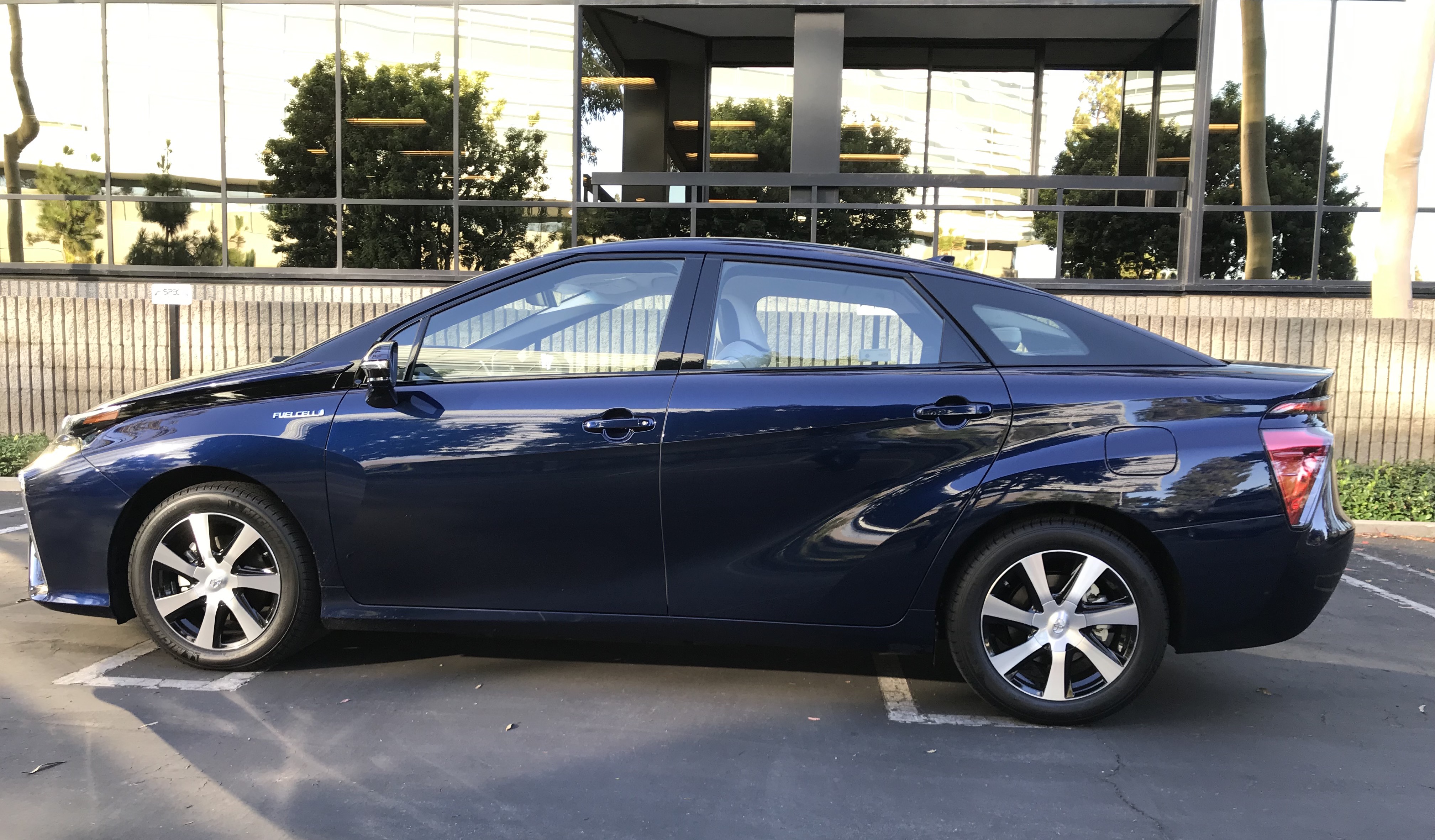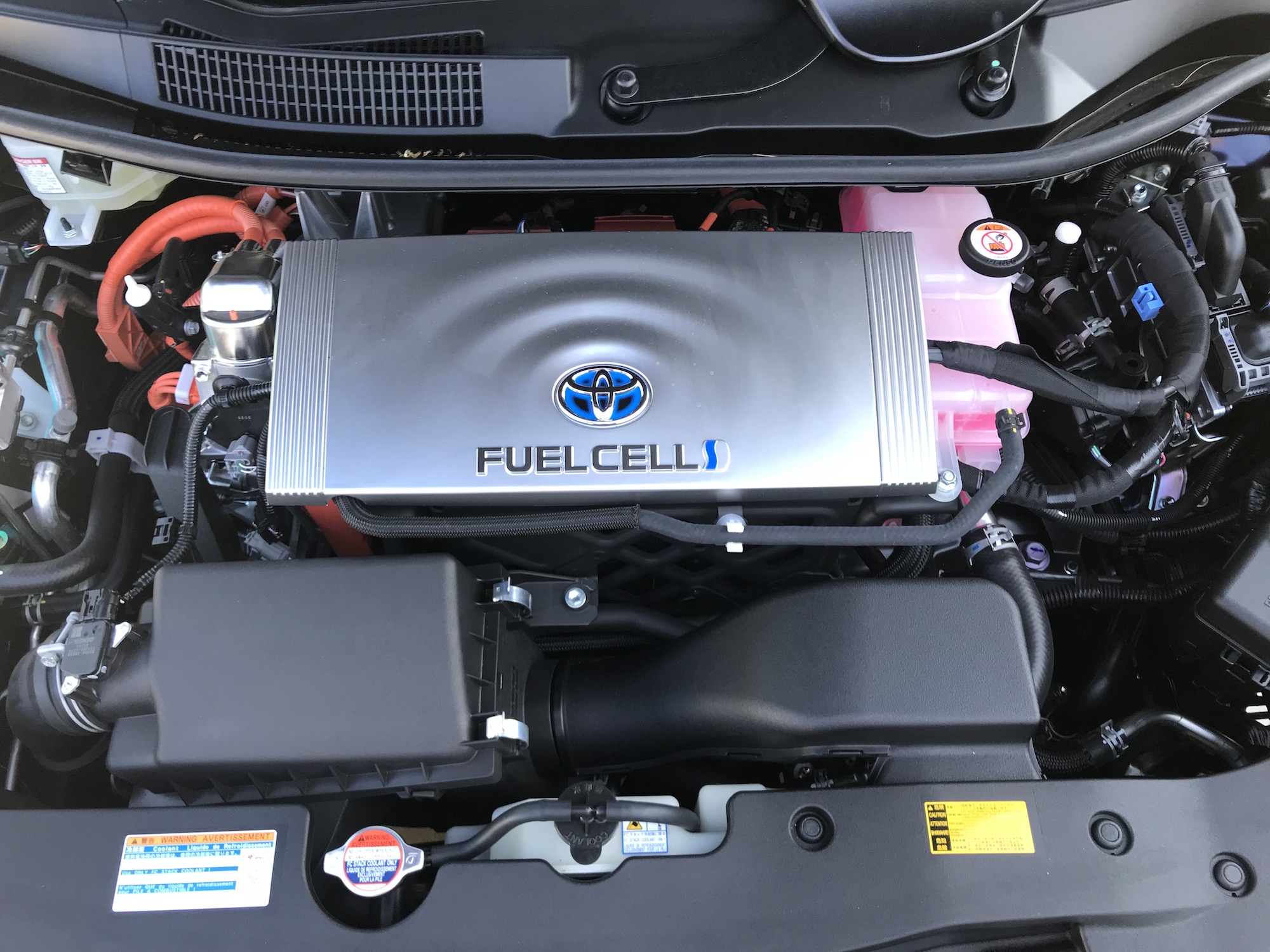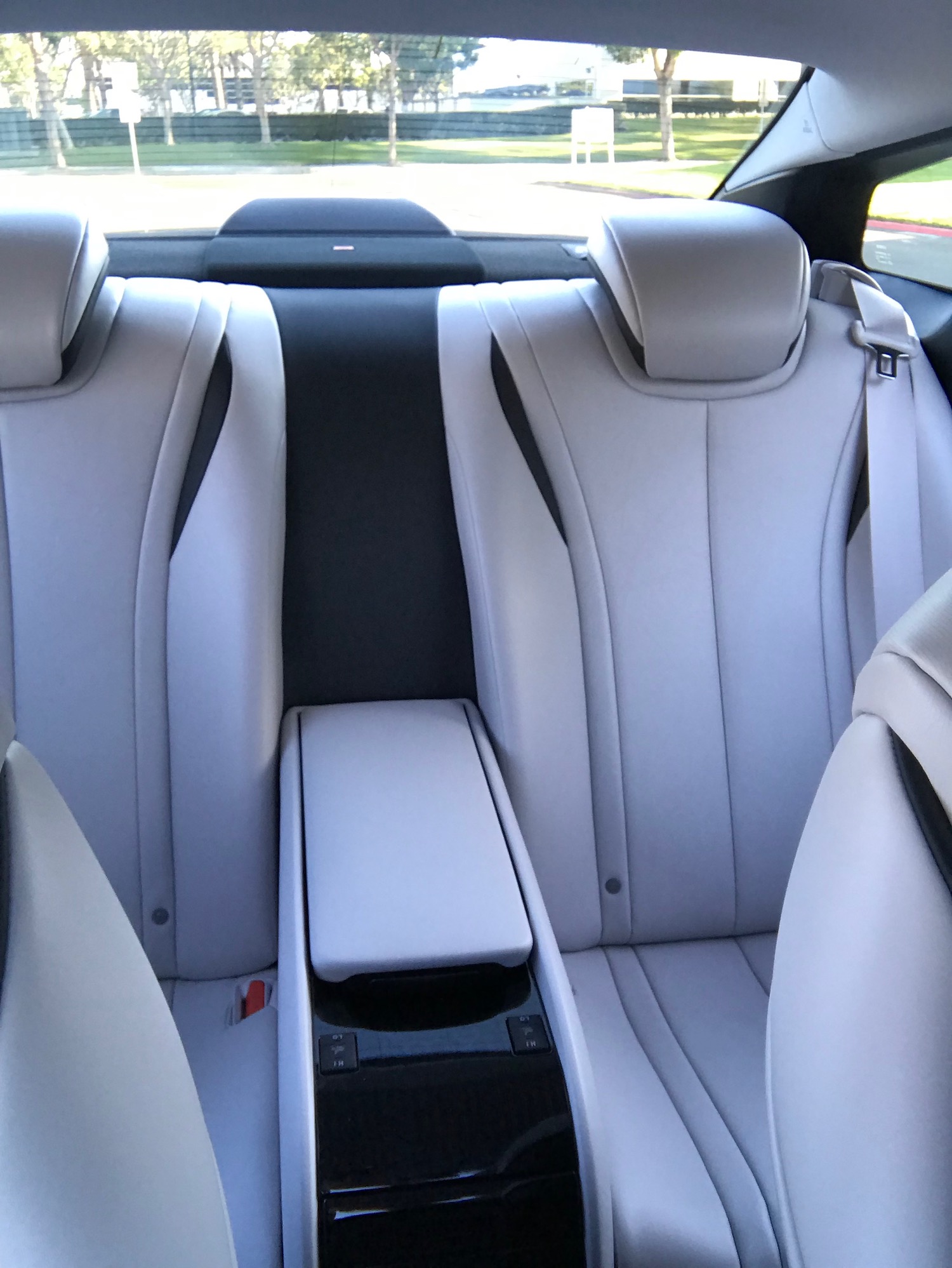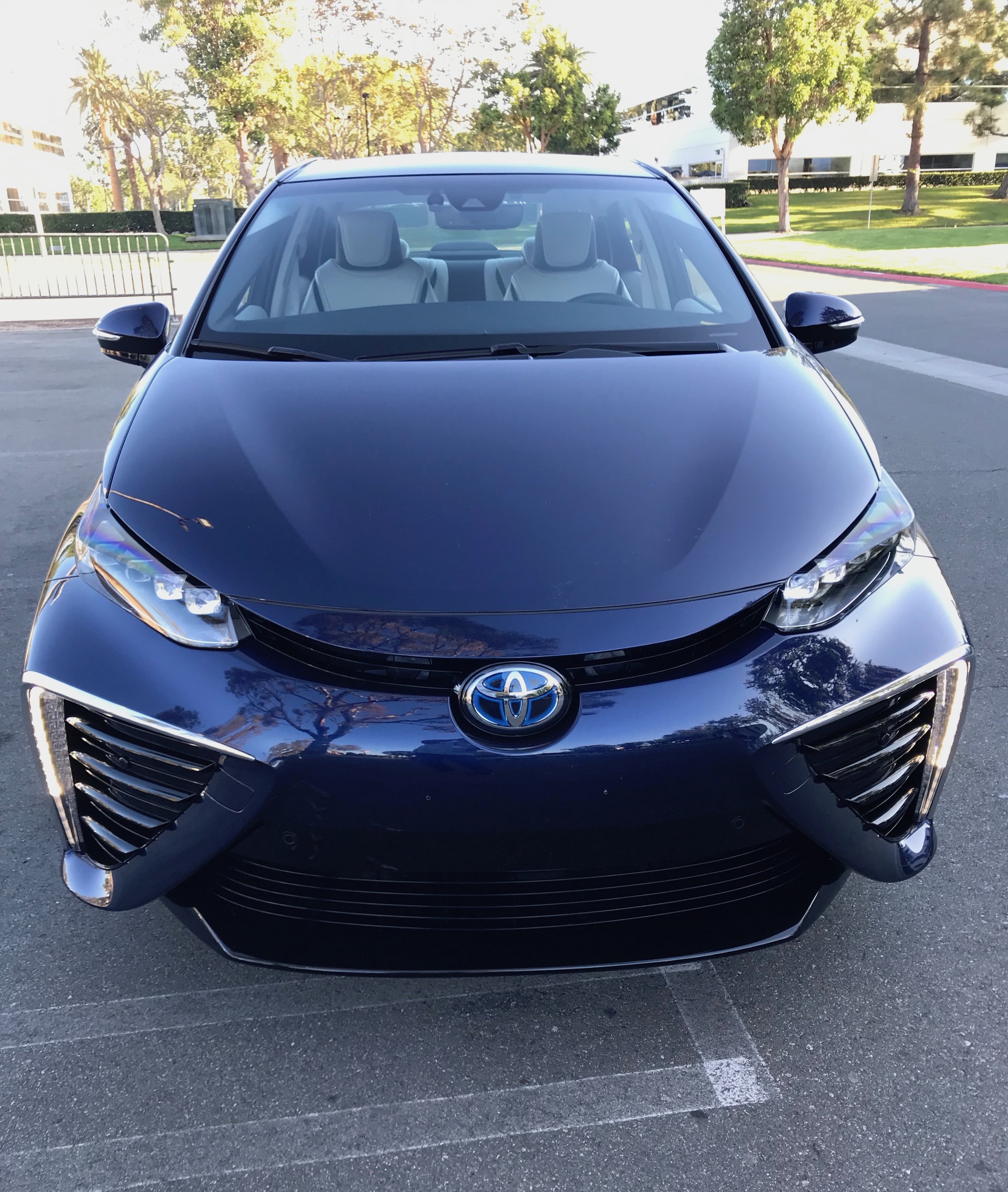
The guy who dropped off my 2019 Toyota Mirai test vehicle was as impressed as anyone with the hydrogen fuel cell-powered sedan, which should please the Japanese automaker if the ads near the top of my Twitter feed every morning are any indication. Toyota must really want to put new drivers in Mirais.
Score one for their marketing gurus, because the tweeted commercials worked well enough on me that I jumped at the chance when a Mirai became available to review.
Toyota seems to be of two minds when it comes to green machines. The Mirai is touted as being superior to electric vehicles because it has a much greater range than most EVs and can be refilled much more quickly than a lithium-ion battery can be recharged.

Despite the advantages the Mirai has over EVs, electrics do have this going for them: There are far more charging stations than there are hydrogen refilling facilities in these parts. Toyota has partnered with Shell to close that gap, so we’ll have to wait and see if parity is accomplished by 2025.
Honestly, the way Mirais are powered was not the first thing on my mind when that loaner rolled up. It was the Nautical Blue Metal paint job that my photos admittedly don’t do justice. It actually looks much more striking in person. In the image up top, it may appear the Mirai’s hood is open. It isn’t, although the hood does rise higher than those on most EVs or petroleum-powered cars.

You also notice once you are in a front seat that you ride a bit higher than expected. That’s because hydrogen and oxygen are mixing in a chamber below the front seats. Don’t worry: That science experiment has nothing to do with the switch that allows you to heat the front seats.
Speaking of padded bum holders, there are only two in the back because more hydrogen-related space was needed underneath where one finds a middle seat in other vehicles. So if there are five people in your family that need to get somewhere, someone’s walking (or Ubering).
The up to four riders will find those seats (and the padded arm rests between them) comfortable. I found the off-white interior of my tester gave the interior a futuristic feel. (The last time I recall an inside vision that stirring was in a 2018 BMW i3s Rex.)

Among the other standard goodies you’ll appreciate are two USB charge ports, dual zone climate controls operated via a touchpad and a 7.0-inch touchscreen for infotainment with Apple CarPlay compatibility.
So how did it drive? Job one is figuring out the sequence between the start/stop button, the park button and the very sensitive gear shifter joystick, although once you’ve got it down it’s no sweat.
When the Mirai was up to speed, it was fine, with the kind of quiet, comfortable, floating feeling you get in an EV. The handling is superb, and in case you push it to the limit, a lane departure alert with steering assist is standard, as are an array of additional safety alerts and features you often pay extra for with other cars.

I was not impressed with what came before getting the Mirai up to speed, however. There was no immediate feeling of performance when I depressed the accelerator; more like a brief lag. That did improve somewhat when driving in Power rather than Eco mode. The 113-kilowatt electric motor generates 151 horsepower and 247 ft.-lb. of torque.
Perhaps it was just me, I thought, so I checked several online reviews and found car journos describing the Mirai response as being similar to an EV. I totally disagree; my Nissan Leaf takes off much quicker and smoother when I press the accelerator pedal, and if I take it out of Eco mode, that sucker shoots off like a rocket (and without the gear-change drags of your gas hogs).
Of course, as mentioned up top, the Mirai easily beats my 2014 Leaf when it comes to range, 300 miles to (on a good charge and conditions … like strong winds) 72 miles.

Your only tailpipe emission is water created by the fuel-cell system, which explains why the Mirai scores perfect 10s in government smog, fuel economy and greenhouse gas ratings. The EPA pegs its MPGe (miles per gallon equivalency) at 67 in the city and on the highway.
And here’s the kicker: Toyota offers Southern California drivers complimentary hydrogen for the first three years (with a $15,000 cap). While there are more EV stations than hydrogen stations here, there are more hydrogen stations in SoCal than just about anywhere else, except Hawaii, perhaps. The closest to my home was a couple miles away, according to the fellow who filled up before dropping off the Mirai.
This region is also among the rare where Toyota will sell, as opposed to lease, Mirais. The based price of my tester was $58,500, which shot up to $59, 495 when adding in $65 wheel locks (the only extra) and a $930 delivery processing and handling fee.

OC Weekly Editor-in-Chief Matt Coker has been engaging, enraging and entertaining readers of newspapers, magazines and websites for decades. He spent the first 13 years of his career in journalism at daily newspapers before “graduating” to OC Weekly in 1995 as the alternative newsweekly’s first calendar editor.


priligy without prescription Saw palmetto supplement use and prostate cancer risk